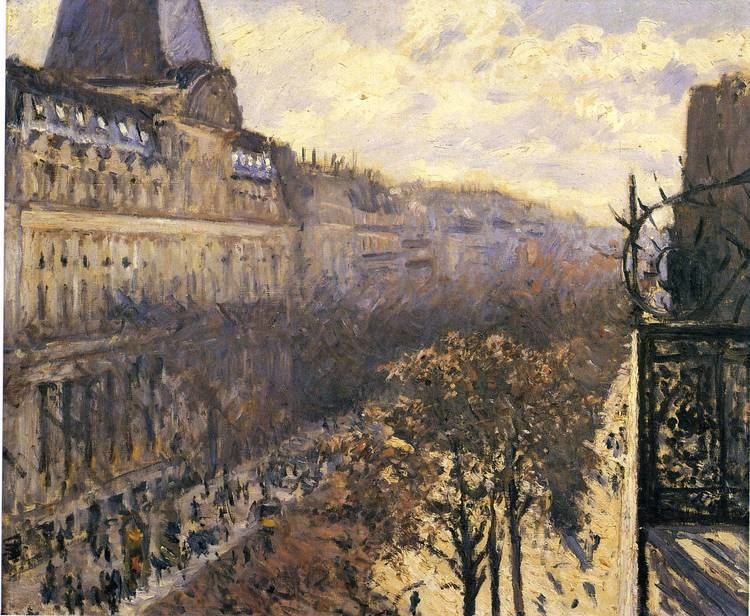From Boulevard Montmartre | ||
 | ||
To Boulevard des Capucines | ||
Paris in august op ra garnier boulevard des capucines boulevard des italiens
The boulevard des Italiens is one of the four 'grands boulevards' in Paris, a chain running east west and also including boulevard de la Madeleine, Boulevard des Capucines and boulevard Montmartre. The origin of the name is the théâtre des Italiens built on it in 1783, shortly before the French Revolution (now replaced by the Opéra-Comique).
Contents
- Paris in august op ra garnier boulevard des capucines boulevard des italiens
- Map of Boulevard des Italiens Paris France
- Boulevard des italiens trailer sd
- History
- Notable places
- References
Map of Boulevard des Italiens, Paris, France
Boulevard des italiens trailer sd
History
The boulevard's former names were:
Throughout the 19th century the boulevard was a meeting place for the elegant elite of Paris (a role that lasted until the First World War).
It was to replace Muscadins and Merveilleuses at the time of the Directoire, Gandins at the Restauration, Dandies during the reign of Louis-Philippe 1st, women in crinolines during the Second Empire.
That time was also a major epoque for several famous Cafés: Café de Paris, café Tortoni (the café Tortoni in Buenos Aires takes its name from that in Paris), café Frascati, café Français, Maison dorée among others. Upon completion of boulevard Haussmann in the 1920s these establishments disappeared to be replaced by other buildings, particularly financial ones.
Notable places
At the junction with rue Laffitte, a nice view of the Sacré-Coeur de Montmartre, which seems to be placed on the top of the Church Notre-Dame-de-Lorette, whereas in fact, it is much more distant.
At the corner of rue de la Chaussée d'Antin was the Dépôt des Gardes-françaises (French Guards' barracks) built by the colonel Duke of Biron in 1764. It gave the name of the boulevard for some years. On 12 July 1789, a platoon of the guards saved his colonel, Duchâtelet, from popular riots.
At the corner of rue Louis-le-Grand, Palais Berlitz, built in the style of the 1930s in place of the Pavillon de Hanovre of the 18th century, which has been disassembled and rebuilt in the park of Sceaux.
